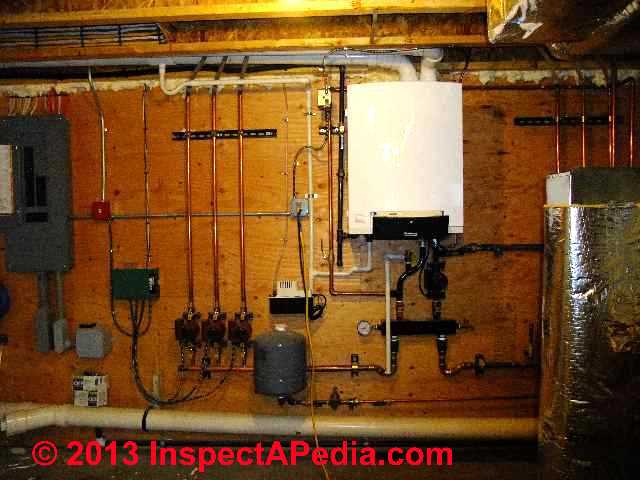

This problem can be tackled by professionals who will offer the best limescale removal solution, according to the severity of the issue.
#Steam radiant heating system how to
How to fix the kettling problem in heating pipes The heat exchanger becomes too hot and ultimately expands and causes heating pipes to making loud banging noises. Kettling issue is most common in hard water areas, where the boiler’s heat exchanger accumulates limescale that constrict the flow of water. Usually, heating systems produce a low level of sound, but heating pipes making loud banging noises can indicate a problem that mostly results from one of the three issues mentioned here.Īlso read: 7 Tips to Make Your Heating System Well-Equipped for Winter Comfort 1. Heated air is dispersed through vents, while hot steam is sent through pressurized pipes and into radiators that “radiate” heat as the hot water passes through them. Heating systems work by forcing heated air or hot steam through an intricate network of pipes. Electric boilers are nearly 100 percent efficient because they produce no waste gas they can be a good option in areas of the country where electricity costs are low.How to Deal with Heating Pipes that Are Making Loud Banging Noises Condensing boilers can reach ratings of over 95 percent when used with an outdoor reset modulation feature that accounts for outdoor temperatures. Most new oil furnaces today have AFUE ratings of between 80 percent and 90 percent, with their gas equivalents rating between 89 percent to 98 percent. “A straight-up trade may not net you much in the way of fuel savings without adjustments to the heating system.”Īny boiler with an AFUE rating of 85 percent or more is considered to be a high-efficiency boiler many of these are Energy Star-certified, which means they meet strict energy-efficiency guidelines set by the U.S. “Replacing your boiler with a high-efficiency unit may seem like a no-brainer, however, these units require different operating conditions to reach their efficiency ratings,” comments O’Brian. This rating shows how effective the unit is in converting fuel into heating energy. Boiler EfficiencyĪ key factor when shopping for a new boiler is the annual fuel utilization efficiency (AFUE) rating. Use this handy BTU calculator to determine what size is appropriate for your home. As an example, if you have a 2,000-square-foot house in a moderate climate, you need a boiler that can produce approximately 70,000 BTUs.

#Steam radiant heating system windows
Every building has a unique BTU requirement based on its geographical location and climate, the number of windows and doors in the home, and the quality and amount of insulation in the walls and ceilings.Īn easy rule-of-thumb for BTU requirements is to figure that you need about 50 BTU per square foot of interior space in a cold climate 35 BTU per square foot in a moderate climate and 20 BTU per square foot in a hot climate. This figure represents the amount of energy required to increase the temperature of one pound of water by one degree Fahrenheit. It’s a good first step in deciding whether or not to replace it.”īoiler capacity is measured in BTUs, or British Thermal Units. A heat loss calculation can determine whether your current boiler is properly sized for your home. “This leads to a dramatic drop in efficiency and an increase in heating bills and maintenance visits.

“While the old adage ‘if it ain’t broke, don’t fix it’ certainly still applies, older boilers were often grossly oversized for the heating load of the house,” explains Daniel O’Brian, technical expert at online retailer. Be advised that if your heating system is more than 10 years old, you may be able to achieve substantial savings by upgrading to a newer model. HeatingWise provides an in-depth explanation of the pros and cons of different types of boilers available. There are several different types of boiler technologies in the market today, including high-efficiency units designed to help homeowners rein in high heating costs.

Boilers use natural gas, oil, electricity, propane, or wood to create hot water or steam that heats your home through radiators, baseboard convectors, radiant floors, or fan-forced coils. The first thing to look at is your boiler-the most common heating source in any water- or steam-based system. Now is the time to assess your heating system and replace any aging or malfunctioning components. Feel that chill in the air? Winter is coming.


 0 kommentar(er)
0 kommentar(er)
